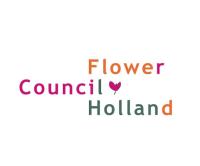BRANDING
PART 2 - MARCH 2017
Definition: The process involved in creating a unique name and image for a product in the consumers' mind, mainly through advertising campaigns with a consistent theme. Branding aims to establish a significant and differentiated presence in the market that attracts and retains loyal customers.

Over the course of this month, we will explore and guide you through the topic of branding; what it is, how it works and how you can use it to help improve your business or the perception of the services you offer.
We will touch on the following subjects:
- What we mean by brand and branding
- How the internet has changed the relationship with customers
- How branding can help your business
- The key ingredients of any good brand
- How to communicate, manage and develop your brand identity
- Branding for different market sectors
- The relationship between design and branding
(Read the Branding White Paper on the above subjects)
The words brand and branding are used a loosely by all sorts of industries in different contexts and with different meanings in mind, so it may help to start by asking: what exactly is a brand?
The easiest way to answer this, is to say that a brand is a set of associations or the connection that a person (or a group of people) make with a company, product, service, individual or organisation.
These associations may be deliberate and they may have been actively encouraged via marketing and corporate identity, or they could also be completely out of the company’s control. E.g. a poor press review for a new product might harm the product or overall brand by placing negative connotations in people’s minds.
To elaborate on this, let’s look at what is probably the best-known product or brand in the world: Coca-Cola.
So what are these all-powerful associations? For Coca-Cola, typical perceptions might be that it is the original cola drink ‘The Real Thing), that its recipe is secret and that there’s nothing quite like it, that it’s all-American, a global icon, youthful, energetic, refreshing and so on. Visual associations includes their unmistakable red and white logo and corporate colours, or the unique shape and tint of the original glass bottles.
These are mostly positive brand associations, but there may be negative ones too. For example, Coca-Cola may be seen as unhealthy, or as a symbol of global colonialism by American brands or a big corporate giant fuelled by greed. What is seen as a positive association to some may be seen as unpleasant to others and negative perceptions could become attached to a brand’s identity even if the company strives to present a different character.
Other high-profile examples of recognised brands include Toyota, British Airways, Tate, Amazon, Save the Children, Burberry, HMRC or even London. From services to cities, products to publications, each carries a strong set of associations in the minds of a large number of people.
But first of all, how do you see your brand?
1) TASK DOWNLOAD: Download the following Brand Assessment Document: task_2_-_brand_assesment_march_2017.pdf (Should be completed and submitted by 10-03-2017)

2) YOUR BRAND AS A GUIDE -BY ESTHER DE WAARD, BRAND MANAGER, FLOWER COUNCIL
We are pleased to present you with an introduction on the subject of Branding for our Best Improved Online Presence Programme, by Esther de Waard, Brand Manager at the Flower Council of Holland. As Brand Manager Esther has the overall responsibility for both our consumer brands: Funnyhowflowersdothat.co.uk and Thejoyofplants.co.uk, develops marketing strategies and plans, and translates them into campaigns, promotions and content in collaboration with the rest of the team at the Flower Council. You can read it HERE.
The above link will take you to the white paper article covering Branding.
You can contact Marketing Manager, Chanel de Kock if you wish to receive this in a Pdf format.
E: c.de.kock@flowercouncil.co.uk
